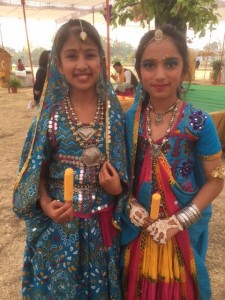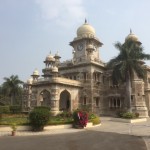 Namasté! That is the common traditional greeting used in India. Translated roughly, it means “the Spirit within me salutes the Spirit in you”, knowing that we are all made from the same divine creator.
Namasté! That is the common traditional greeting used in India. Translated roughly, it means “the Spirit within me salutes the Spirit in you”, knowing that we are all made from the same divine creator.
I offered this greeting to LCC students in an assembly this week because I recently participated in an excellent week-long seminar in India. Forty school leaders from twenty countries were fortunate to visit the cities of Mumbai, on India’s west coast, and Indore, in north-central India. As heads of schools committed to global education and global awareness, the objective was for us to learn about India’s education system and better understand the complexity of this ancient society.
India has experienced rapid growth in several sectors in recent years, but the country remains a place of shimmering ancient traditions and challenging contradictions – especially when viewed through the lens of western eyes and thinking.
India is the world’s largest democracy and second most populated country. Its massive population of 1.31 billion people is marginally less than China’s 1.38 billion. But demographers expect India to surpass China in population within 5-7 years. Its land mass is about twice the size of Québec’s – but with an astounding 160 times as many people.
If you haven’t visited India, you would likely be struck by its cultural and linguistic diversity. The most common languages are Hindi and English. However, there are about 20 other official languages spoken. India is a very spiritual country. It has no official state religion, but more than 80 percent of Indians are Hindu. About 13 percent are Muslim (170 million people), making it the second largest Muslim country after Indonesia. Other religions include Buddhism, Sikhism, and Jainism. Notably, all of those religions began in India, whose earliest civilizations date back about five thousand years.
Over its ancient history, India faced a series of invasions by foreign forces, and local kingdoms preserved unique regional traditions. By the late 1400s, Europeans arrived and began setting up trading companies – especially the Portuguese and British. In 1757, Britain gained control over most of the country. In 1920, the famed Mahatma Gandhi began nonviolent protests to push the British out. After effectively implementing his philosophy of “passive resistance” against British control, India finally gained independence in 1947.
The collapse of the British Raj in 1947 saw the subsequent partition of the whole sub-continent into present-day India, Pakistan and Bangladesh – which also sowed the seeds for future conflict. There have been three wars since 1947 between India (mostly Hindu) and its arch-rival Pakistan (mostly Muslim). Two of them were over the disputed territory of Kashmir between northern India and Pakistan. Although currently more calm, we should all pay attention to this regional dispute because both India and Pakistan are now nuclear nations.
Historically, a majority of Indians have always lived on rather meager incomes – currently less than two dollars a day. However, it is the growth of an Indian middle class that has defined the rapid change in the country during the past 20 years. India has a fast-growing economy with a large, skilled workforce – especially in the fields of IT and engineering. The Hyderabad-Bangalore corridor now rivals Silicon Valley for high-tech creativity and innovation.
India can be very challenging to the western eye. Cows wander freely in the streets of the cities and expanding urban slums portray the harshness of life for so many. Mumbai, New Delhi and other large cities struggle with urban growth and severe pressure on natural resources and the natural environment. Yet, that massive middle class continues to amaze. People are buying cars and other symbols of the “good life” at a rate higher than any other nation.
A vibrant independent school system continues to produce many of India’s leaders. However, I recently learned that unfortunately, the public school system is failing. Teachers are poorly trained and underpaid. In the outer regions some teachers even sublet their jobs because oversight is limited. Learning is still largely based on memory work, from a system designed to produce clerks serving the old British colonial regime. Nationally, there is very little commitment to developing essential 21st century learning skills.
The Hindu faith asks all to be content with this life and to accept one’s social and economic standing – and wait until the next life to experience significant change. This is perhaps the best explanation as to why there has been peace, democracy and limited social unrest in India.
I urge our LCC community to learn more about this dynamic land of brilliant achievement, complexity and contrasts. There are many great Indian schools that are part of our Round Square international association. We have sent some high school students on exchange to India. However, in recent years we have lapsed. I believe more students should muster the courage to go on exchange to one of the excellent and safe schools in the Round Square association. Yes, it would take an open mind and flexibility, but the experience would surely be worthwhile. Anyone who visits India will gain a deeper understanding and respect for a fascinating country that will certainly play a large part in defining our students’ adult lives.
Namasté. Consider how and when you can gain a deeper understanding and respect for one of the world’s oldest, most diverse and complicated societies. You won’t regret it.
– Chris Shannon, Headmaster


